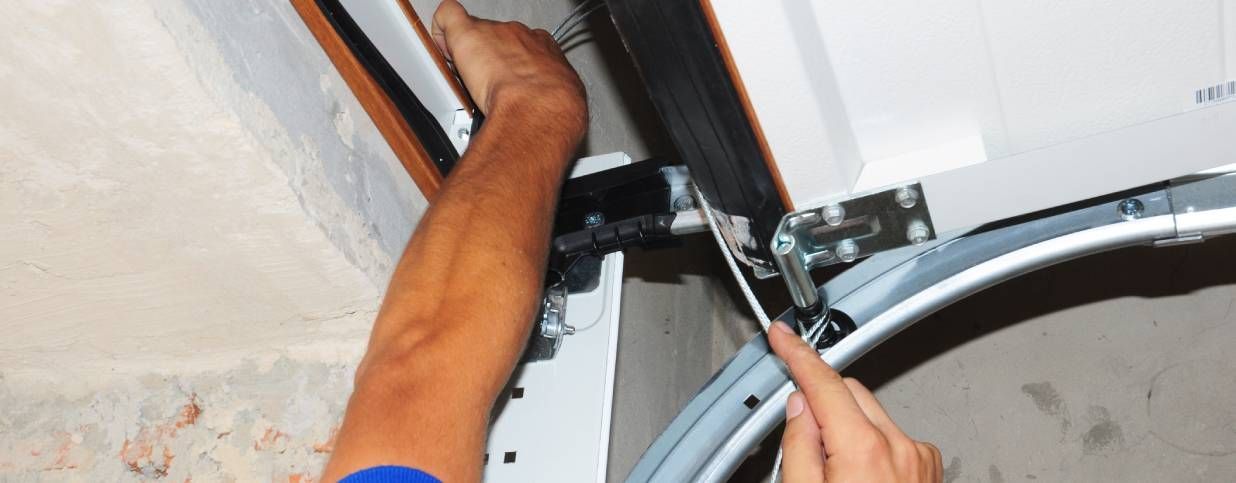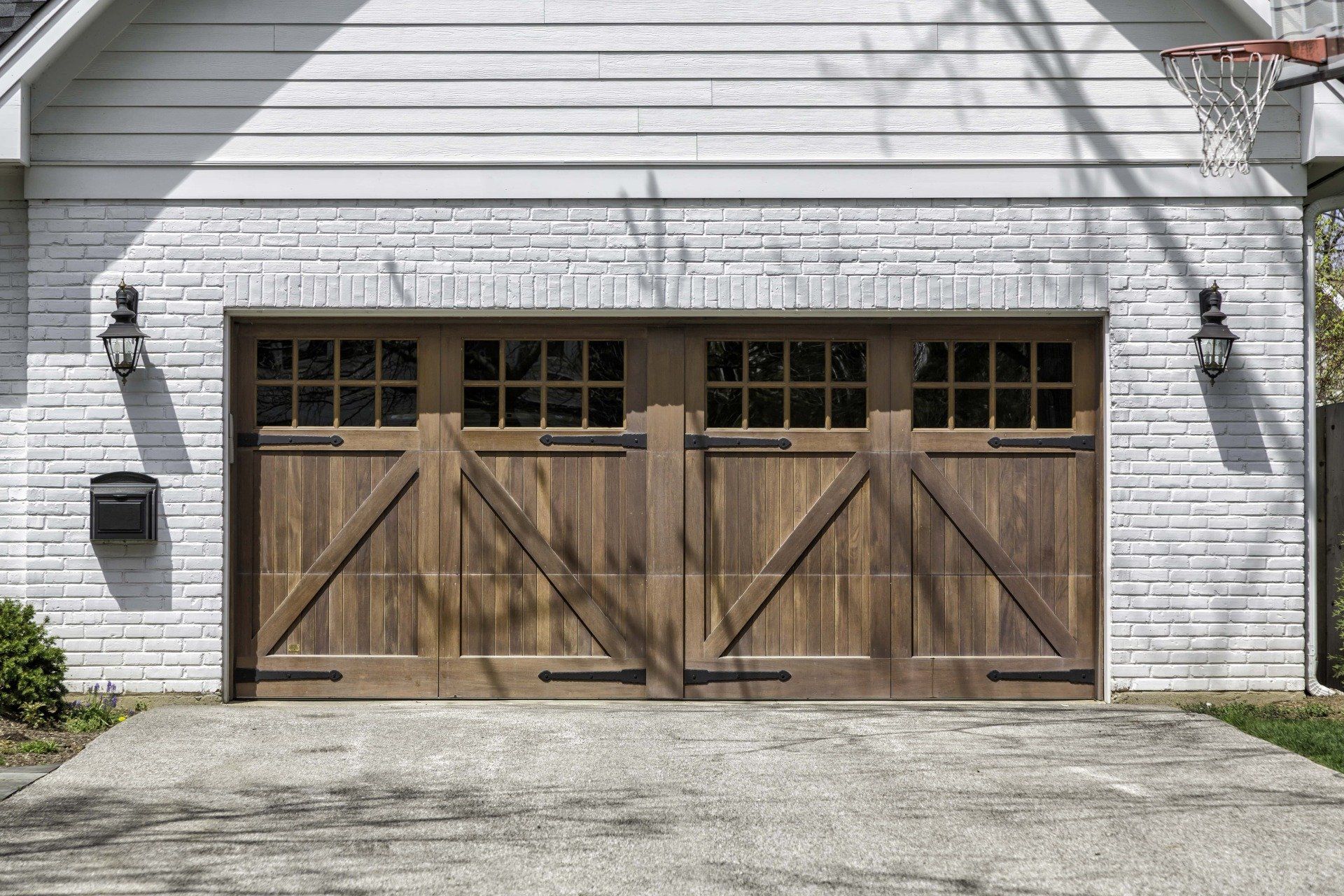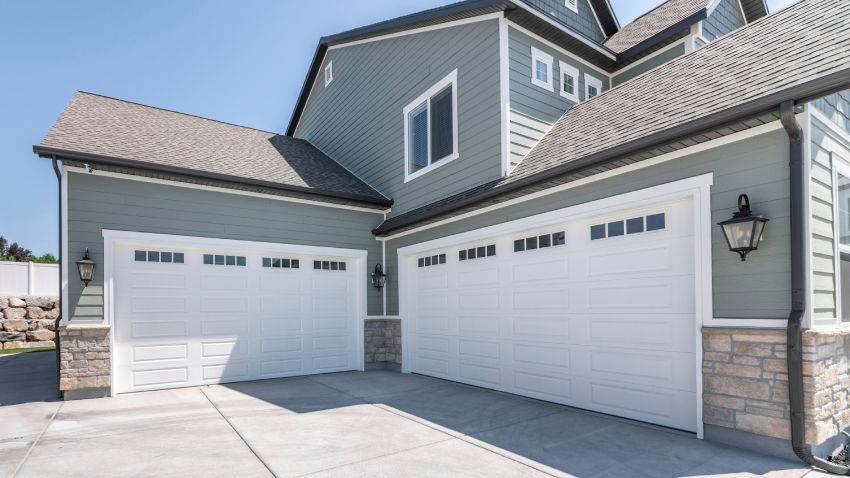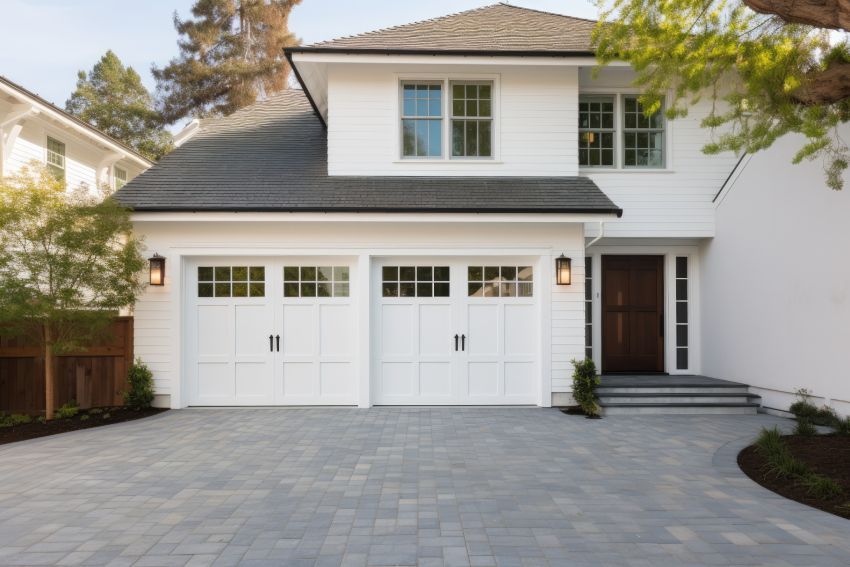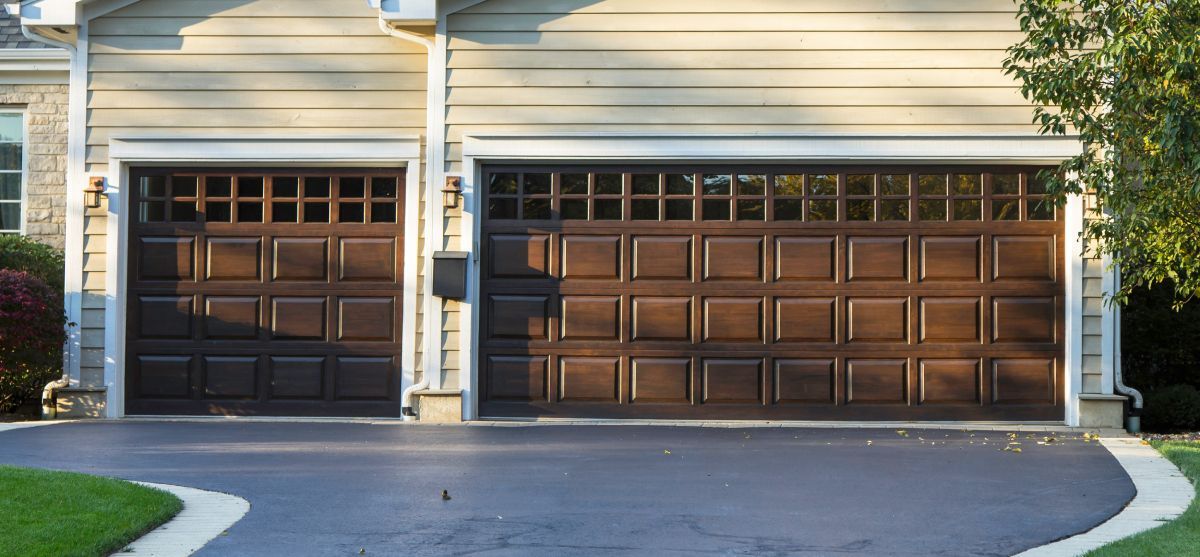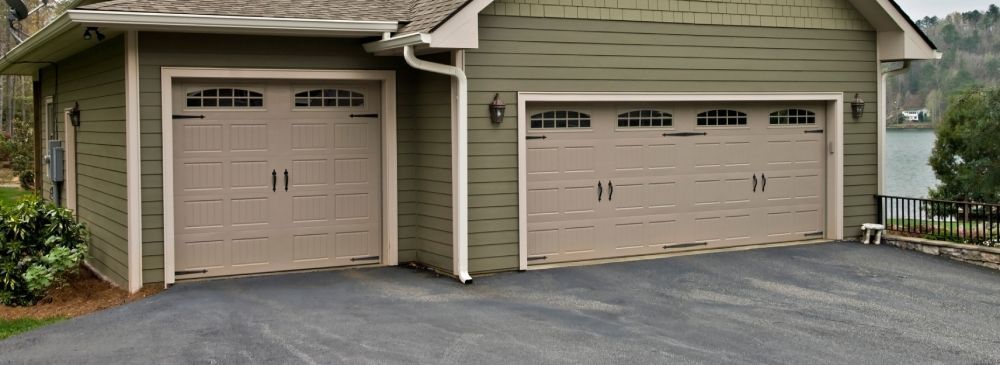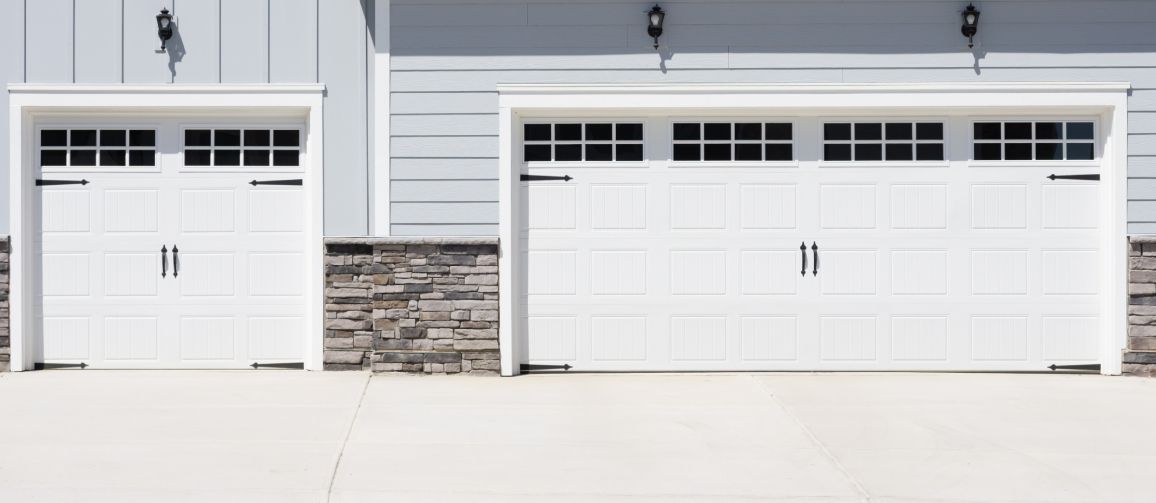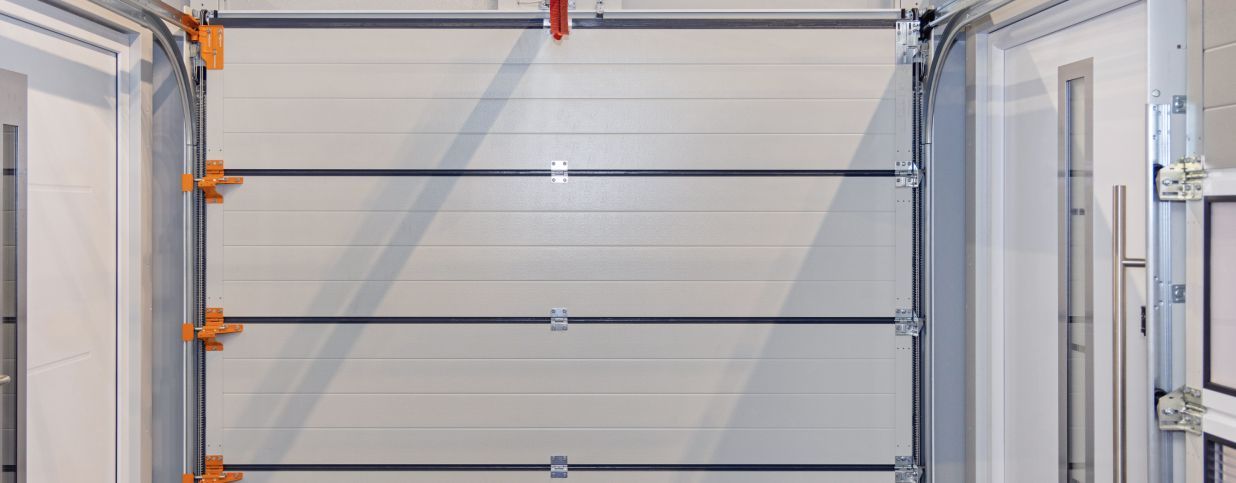The Ultimate Guide to Broken Garage Door Springs
By Jim Hatley, August 4, 2025
This is a subtitle for your new post
We often forget how hard our garage doors work. Every day, they open and close at least twice - usually more than that. It stands to reason that their components experience a fair amount of wear and tear and need repair or replacement on a regular basis. This is especially true of garage door springs. Broken garage door springs are perhaps the most common garage door problem that homeowners will have to deal with. Here is what you need to know about dealing with broken garage door springs.
What is a Garage Door Spring?
Garage door springs counterbalance the weight of the door to make it easy to open and close. They serve the same purpose as counterweights used to balance doors in centuries past and in many doors today. For example, if a garage door weighs 100 pounds, a spring force of 100 pounds needs to pull against the weight of the door. This can be accomplished with springs that either stretch or torque special parts to assist in balancing the door.
Why Garage Door Springs Break
Garage door springs break for a number of reasons. They may collect rust over time, which affects their structural integrity and flexibility. They become brittle and ultimately snap. However, in most cases, the reason for the break is overuse. The average torsion spring in a garage door will break after about 10,000 uses. This amounts to about 13 years of usage, which means you get pretty decent use out of each spring. When your springs finally do go, however, what should you do about it?
Signs of a Broken Garage Door Spring
Determining if your garage door springs need to be replaced is crucial for both safety and functionality. Worn or broken springs can lead to serious operational issues or even cause the door to fail. Luckily, several clear signs can help you identify when it's time for a garage door spring replacement. There are several key indicators to look out for, which will tell you if your springs need to be replaced.
The Garage Door Won’t Open or Close Properly
If your garage door won’t open or close all the way, or stops mid-cycle, your springs may not be delivering the necessary tension. This is one of the most common and immediate signs that your spring system is compromised.
There Are Visible Gaps in the Spring
Inspect your garage door torsion spring closely. A visible gap in the coil usually means the spring has snapped. Since the spring is no longer tightly wound, it can’t support the door’s weight and must be replaced.
You Heard a Loud Bang or Snap
A sudden loud noise, like a firecracker or a gunshot, coming from inside the garage often signals a broken torsion spring. This happens when the spring violently releases its stored energy under tension.
The Garage Door Feels Unusually Heavy
A healthy spring should help lift the heavy door with ease. If your garage door suddenly feels much heavier or requires more effort to open manually, the spring likely isn’t doing its job.
Loose or Detached Garage Door Cables
When springs break, cables connected to your door may go slack or fall off entirely. This type of malfunctioning garage door setup should be addressed immediately to avoid further issues.
Uneven Garage Door Movement During Opening
If your garage door appears crooked or opens unevenly, one spring may have failed while the other is still functional. This imbalance can wear out components quickly and cause the door to come crashing down.
Broken Garage Door Spring Causes Jerky Motion
Jerky or erratic movement when opening or closing often signals that your springs are worn out. These malfunctions not only reduce performance but may also cause damage to your garage door opener.
Rusty Garage Door Springs Signal Failure
Springs are in good condition when clean, lubricated, and rust-free. If you notice corrosion, it’s a sign the metal is deteriorating, making it more prone to breakage.
Garage Door Slams Shut When Closing
A properly balanced door should close slowly and smoothly. If it comes crashing down or slams shut, this is a critical safety issue that typically points to broken garage door springs.
Garage Door Opener Straining to Lift
If your garage door opener sounds louder than usual or struggles to lift the door, it could be compensating for failing springs. Since the opener isn’t designed to bear the full weight of the door, this could lead to motor burnout or complete failure.
If you notice any of these warning signs, do not ignore them. Doing so can lead to bigger problems, including damage to other parts of your garage door system, more expensive repairs down the road, and most importantly, safety risks for you and your loved ones. To avoid these issues, you need to take action right away.
Types of Garage Door Springs
Understanding the different types of garage door springs is key to ensuring long-term performance and safety. The two most common options used in residential garage doors are torsion springs and extension springs. While both are designed to lift and lower your garage door, they operate in different ways and offer distinct benefits depending on your setup, door weight, and available space.
Torsion Springs
Torsion springs are the most common and highly recommended choice for modern garage door systems.
- Mounted directly above the garage door on a metal shaft called a torsion tube
- Work by twisting to store energy as the door closes and unwinding to lift it
- Provide smoother, more controlled motion—ideal for heavy lifting
- Reduce strain on your garage door opener and minimize maintenance
- Safer when they break, since they’re mounted securely to the torsion shaft
- Typically last 15,000+ cycles and offer excellent long-term value
- Normally installed by a professional garage door technician due to their complexity and tension
Extension Springs
Extension springs are more commonly found on older garage door setups or in garages with limited headroom.
- Installed along both sides of the door, running parallel to the horizontal tracks
- Stretch and contract to help raise and lower the door
- More affordable, but typically have a shorter lifespan (5,000–10,000 cycles)
- Require safety cables to prevent injury if the spring breaks
- More exposed components, which may increase maintenance needs
- Should always be inspected regularly to prioritize safety
Torsion Springs vs. Extension Springs: What’s the Difference?
While both types of garage door springs serve the same basic purpose, balancing the weight of the door, their mechanics and safety profiles differ:
- Torsion springs twist around a shaft and offer better control, longer lifespan, and significant tension stability. They’re ideal for heavier garage doors.
- Extension springs stretch along each side of the door and are better for smaller or lighter setups, but they pose greater risks if not installed with proper safety precautions.
How to Identify the Type of Garage Door Spring You Have
Knowing which type of spring your garage door uses makes it easier to spot problems and schedule timely service. If you're unsure, a professional garage door repair service can help you identify the system and perform a safe inspection.
Identifying a Torsion Spring
Your garage likely uses torsion springs if:
- The spring is mounted horizontally above the garage door
- There are metal cones at each end of the spring
- A steel torsion tube runs across the top of the door and connects to cable drums
Identifying Extension Springs
Your garage likely uses extension springs if:
- Springs run along the sides of the garage, parallel to the door tracks
- The springs have visible loops on the ends (open, double, or clipped)
- You see pulleys and safety cables attached to the system
Which Garage Door Spring Is Best?
In most cases, coated torsion springs are the superior option due to their:
- Enhanced safety (they stay contained when they break)
- Longer lifespan, especially when e-coated
- Smoother, quieter operation, which is easier on your automatic opener
- Compliance with modern building codes and safety standards
While extension springs are more budget-friendly and still widely used, they do come with more risks if not properly installed or maintained. This is especially true when emergency release cords and safety cables are missing or misconfigured.
Broken Garage Door Springs FAQ's
How Do I Determine What Garage Door Spring I Need?
To determine which garage spring your system requires, you'll first need to identify whether you have torsion or extension springs. You should also consider the weight and size of your garage door’s panels. Since selecting the wrong spring type can lead to system failure or damage, we recommend contacting a garage door repair company for a professional assessment.
How Much Does It Cost to Replace a Spring on a Garage Door?
The average cost for a garage door spring repair ranges from $150 to $300. This includes both the labor and the new spring itself. Some providers may offer a warranty on parts and service, which can add long-term value. The final price may vary based on your spring type, door size, and accessibility.
Can I Replace Garage Door Springs Myself?
Replacing broken garage door springs is extremely dangerous due to the high tension involved in both torsion and extension spring systems. Torsion springs are tightly wound to counterbalance the weight of the garage door, while extension springs are stretched under significant pressure. Attempting to repair or replace a spring without proper tools and experience can cause serious injury or even death if it snaps loose.
Many garage door parts are interconnected with the spring system, including cables, drums, and brackets. A lack of understanding about spring mechanics, specialized tools, and tension control has led to countless accidents.
For your safety, always hire garage door professionals for spring repair. They have the knowledge and training to handle high-torque components safely and effectively.
What Happens When a Garage Door Spring Fails?
When a spring is broken, the door may no longer open or close properly. You might hear a loud bang when the break occurs, and the door could become crooked, extremely heavy, or completely inoperable. Continuing to operate a garage door with a broken spring can cause serious damage to the opener and other mechanical parts. If your spring fails, stop usage immediately and call a professional for spring repair.
Can I Manually Open a Garage Door if the Spring Is Broken?
It is possible to open the garage door manually in some cases, but it’s extremely risky. A door with a broken spring is unbalanced and heavy, increasing the risk of injury. Attempting this without specialized tools or knowledge can lead to serious harm. To stay safe and avoid further damage, always contact a professional instead of trying to lift the door on your own.
How to Tell if Garage Door Springs Need to Be Replaced?
There are several clear signs that your garage door springs need replacing: the door opens unevenly, feels unusually heavy, or makes loud noises during operation. In many cases, you’ll also notice difficulty when trying to open and close your garage. If you're unsure, it's best to have the system inspected before the garage door spring breaks completely.
Is It Safe to Use a Garage Door With a Broken Spring?
No, it’s not safe to use a garage door with broken springs. When a spring fails, the garage door's balance is compromised, making the system unpredictable. Continuing to operate it can strain the opener or cause the door to fall unexpectedly. If you're facing this issue, replace the springs right away and avoid using the door until repairs are made by qualified garage door professionals.
Your Trusted Professional Garage Door Company in Colorado
If you're dealing with a broken garage door spring or need reliable garage door services, Tri-Lakes Garage Doors is here to help. We specialize in custom garage doors for both residential and commercial properties across the Front Range. Don’t wait until a small issue becomes a big problem; contact us today to schedule service with a trusted garage door company in Colorado.

